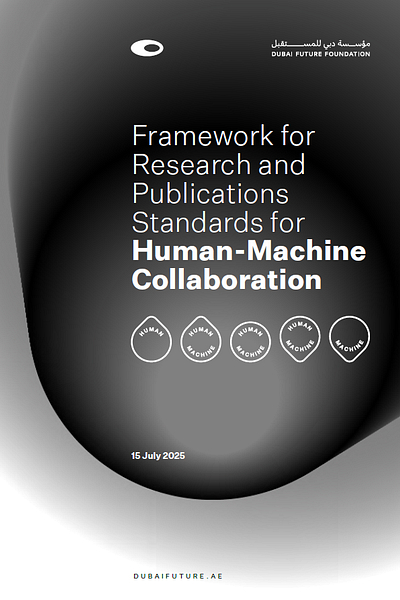Dubai launches human-AI collaboration classification
Dubai Crown Prince approves transparency initiative for AI-human collaboration
#UAE #governance - The Crown Prince of Dubai and Chairman of Dubai Executive Council. His Highness Sheikh Hamdan Bin Mohammed Bin Rashid Al Maktoum has approved the launch of the world's first Human-Machine Collaboration classification system, developed by Dubai-based research institute Dubai Future Foundation, featuring five primary icons and nine functional indicators to distinguish between human creativity and artificial intelligence in research, academic, and creative content production. The global system aims to enhance transparency across research documents, publications, and content creation, helping readers and decision-makers to understand machine involvement in academic and creative outputs.
SO WHAT? - Dubai’s new AI classification system addresses the post-Turing era challenge where machine language and intelligence have become indistinguishable from human capabilities. During this transitional period, which may last several years or up to a decade, the classification provides essential transparency as research and publications increasingly rely on autonomous processes across different contexts and industries at varying rates. The system could prove to be a crucial tool for academic integrity, research credibility, and content authenticity across industries.
Here are some key points about this story:
The Crown Prince of Dubai and Chairman of Dubai Executive Council. His Highness Sheikh Hamdan Bin Mohammed Bin Rashid Al Maktoum has approved the launch of the world's first Human-Machine Collaboration classification system, developed by Dubai Future Foundation,
The Crown Prince has mandated all Dubai Government entities adopt the classification system in their research and knowledge-based activities.
The Human-Machine Collaboration system introduces five primary classifications ranging from "All Human" through "Human Led," "Machine Assisted," and "Machine Led" to "All Machine," to provide clear indicators of collaboration levels.
Nine functional sub-classification icons specify where human-machine collaboration occurred during the content creation process, covering ideation, literature review, data collection, analysis, interpretation, writing, translation, visuals, and design phases.
The system provides visual transparency tools for readers, researchers, and decision-makers to understand machine involvement in research documents, publications, and creative content across multiple industries.
The classification system defines intelligent machines as encompassing algorithms, automation tools, generative AI models, robotics, and any technological system involved in research or content creation processes.
The flexible framework adapts across sectors, industries, and content formats including image and video outputs, though it relies on creator judgement rather than assigning exact percentage weights to machine contributions.
The Dubai Future Foundation developed the system to address the challenge of distinguishing between human creativity and artificial intelligence amid rapid technological advancement in content production fields.
ZOOM OUT - The new classification reflects growing global concern about AI transparency and authenticity in academic and creative fields. Dubai aims to enhance its reputation as a global AI centre by providing frameworks to help provide transparency across the AI value chain. Earlier this year the Dubai Centre for Artificial Intelligence launched the Dubai AI Seal, which certifies trustworthy AI companies across six tiers to help public and private sector organisations identify reliable AI service providers. Together, these initiatives help position Dubai as a global leader in AI governance, creating frameworks to support trust in its fast-growing AI ecosystem.
[Written and edited with the assistance of AI]
LINKS
Icons for human - machine collaboration (Dubai Future Foundation)



